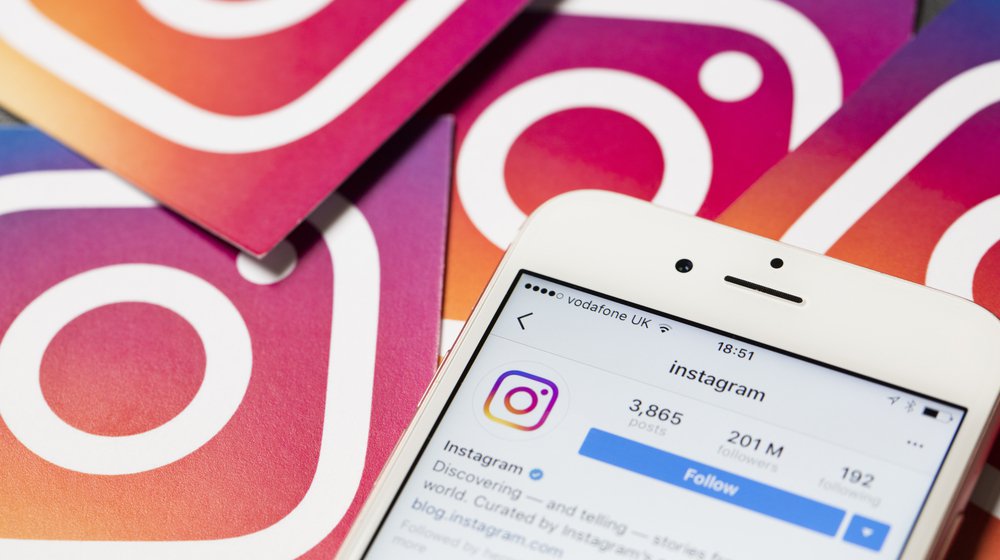A decade ago, the field of influencer marketing was restricted to only celebrities and a few dedicated bloggers. Now, it seems like we’ve witnessed influencers rise, saturate the market and even indulge in fraudulent activities.
If you’ve researched on influencer marketing before, you may have found conflicting information, with recommendations that range from suggesting to take their help to them being not essential for growth.
Influencer marketing strategies are tougher to get through than ever as a brand, but we’re here with a guide to help you get the gist of it.
The scenario today
Standing out in 2014 on Instagram was easier than today. If you were lucky enough to be featured on Instagram’s featured page or your look was just distinctive enough, then your chances of being tapped as an influencer were high. After enough brand partnerships, some have turned influencer marketing into a full-time career.
Rosie Clayton’s Instagram feed is filled with colorful dresses and outfits against colorful walls. During a time when VSCO’s muted tone filters were becoming popular, Rosie’s highly saturated photos jumped out. She works with brands around the world, fitting them into her aesthetic.
But things change, right?
We’re influenced by what we see and aesthetics are no different. Bright images are more common now as well as carefully propped up food against interesting backgrounds. When the ‘typical look’ of influencer marketing no longer becomes unique, what comes next?
To be a fashion influencer among this younger demographic, you may no longer need to rely solely on perfectly shot photos. Instead, casual poses and limited editing are now becoming more welcome on the feed.
Keep in mind that the article covered only a subset of influencers: young, Instagram users. If anything, this shift over the last five years should show how influencer marketing’s only constant is change.
Influencer marketing? What exactly is that?
At a fundamental level, influencer marketing is a type of social media marketing that uses endorsements and product mentions from influencers–individuals who have a dedicated social following and are viewed as experts within their niche. Influencer marketing works because of the high amount of trust that influencers have built up with their following, and recommendations from them serve as a form of social proof to your brand’s potential customers.
The value of influencer marketing
While Instagram influencer marketing is a well-known strategy, there are many other networks that are growing for influencers.
Influencer marketing agency Mediakix surveyed marketers at the end of 2018 to know their views on influencers and influencer marketing in general.
Out of all surveyed, 89% said ROI from influencer marketing was comparable to or better than other networks. The same survey noted that 65% of marketers plan on increasing their budgets for 2019.
And now that you know where we’re at in the industry, let’s examine how to create a strategy.
Tips to Create Influencer Marketing Strategy
Like any marketing tactic, an influencer program takes requires extensive planning and system. Freebies will only take you so far.
1. Identify Influencers
Research research research. It is crucial. it is imperative that you choose the area to focus on. You can always expand to other networks later but if you’re just starting out, stick with one. Ideally, your brand should already have a presence on this network or be looking to expand into it. Every Network has its own demographics.
The industry you’re in also matters when you’re planning to implement an influencer marketing strategy. Fashion and beauty brands are popular on Instagram and YouTube. The video game industry dominates on Twitch.
During your research phase, look into the type of influencers you’re interested in. Are you going for celebrities with massive followings? Or micro influencers with less than 2000 followers? Perhaps something in between in the 5–10k follower range is more your preference. Whatever you decide to focus on will determine your budget.
Compensation varies wildly, too, so be sure to look at common rates for those influencer types.
You’ll need to think about the expected ROI of your influencer marketing campaign: how will you gauge the contributions of influencer posts to your overall marketing goals? One approach might be to compare your expectations for influencers to other firms – look at how you might gauge the budget for a video production firm’s work in creating an ad for you versus an influencer creating a video. It may initially seem like judging the value of influencers is unpredictable, but this type of approach will give you a familiar point of comparison and contrast.
Research is the key and you’ll find yourself returning to this step often in the process.
2. Finalise a management strategy and budget
Now that you have some idea of what to pay to influencers, you need to create your budget. Be sure to also factor in time for planning, executing and reviewing your strategy. Running a successful influencer marketing campaign is not a set-it-and-go type of strategy. It’ll involve careful monitoring and follow up.
Unlike a more automated ad strategy, influencers are human and frequently balancing multiple partnerships, which increases the chances of them falling behind in their commitments to post on time or making errors in your requested tags or calls to action. You’ll need to have the time to be more hands-on with these relationships to cultivate them, and refine your approach through experience about what works and what doesn’t in your niche.
If you have the time and money, consider setting up a formal ambassador program. Fujifilm utilizes its ambassadors in new product launches and in supplementing their content. With a variety of photographers and videographers at their disposal, the company’s able to diversify their feed to showcase what their equipment can do.
3. Contact your influencers
Back to step one: research. With a plan set around your network, goals and what types of influencers you want to target, we go back to researching to actually find the right influencers to work with.
During this research, keep in mind the below:
- Does the influencer already post about similar things to your service? For example, if you’re a restaurant and you want to promote a new menu, you should be looking for influencers who regularly post about dining out and the food they eat.
- Are they legit? This means scrolling through their feed and clicking through on posts. A poor engagement ratio to follower count and spam-like comments are signs of a fraudulent account.
- Have they worked with similar brands before? Depending on what type of influencer you’re looking for, a seasoned one will be able to show you a press kit that contains a portfolio of their work. The more you invest in an influencer, the more you’ll want to vet them.
You can also use Insta Captain tools like Auto follow to identify potential influencers that will fit your campaigns. With the help of auto-follow, you can search for Instagram users in your niche and Insta Captain will help you to follow them automatically to get their attention.
Search for hashtags related to your niche and put the status to “Active”
Next, determine how you’ll be reaching out to them. For micro influencers, you could reach out directly in a private message on the same platform. For more established ones, click around their profile and they may list contact information for business inquiries in their bio. They may also link a website that denotes brand partnerships.
.
4. Set Goals
The two most common reasons for using influencer marketing are to elevate brand awareness and increase sales. However, instead of setting these broad targets as your two goals, it will be more effective to kick off on your strategy by honing in on what your brand’s needs are. Perhaps you want to increase your customer base in a younger demographic. Or you want to expand into a new user group with a new product. Or you want to skip trends and utilize influencers to talk about your brand values.
Your message is just as important as your goal. While you don’t want to stifle an influencer’s creativity and uniqueness, you also don’t want them to post about something unrelated to your campaign. Determine how you want to structure your influencer marketing campaign and message so you can stick to it later on.
5. Keep reviewing strategy
Even if your influencer marketing campaign is ongoing, you should still be monitoring every aspect of it regularly.
To wrap it up
The world of influencer marketing is ever changing. However, influencers are here to stay for a long time. This guide will help you get started with building your strategy, but like any social strategy it’s important to be ready for change.
Still, while there are some unique considerations to working with influencers, setting up a campaign is the same as most marketing campaigns: research, set a budget, determine goals, find your influencers and review and revise.
Once you’ve gotten the rhythm down, you might find yourself creating additional types of influencer marketing campaigns. Success varies between brands so don’t give up if your first one is a failure. You might find that incorporating influencers into your marketing strategy is wildly beneficial to everyone.




